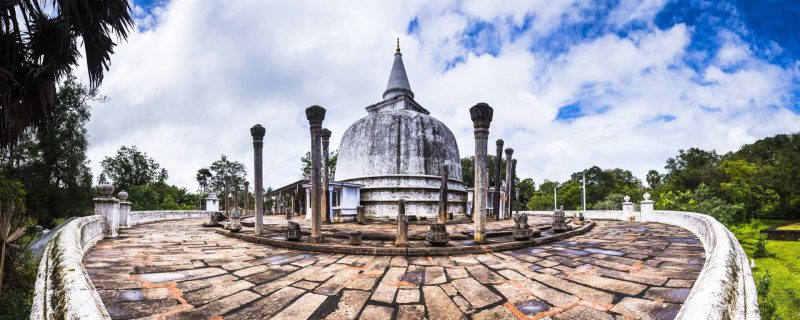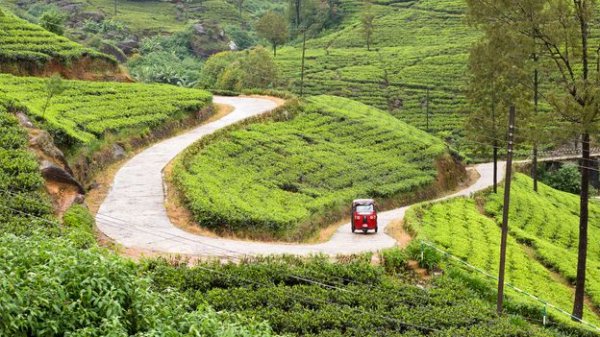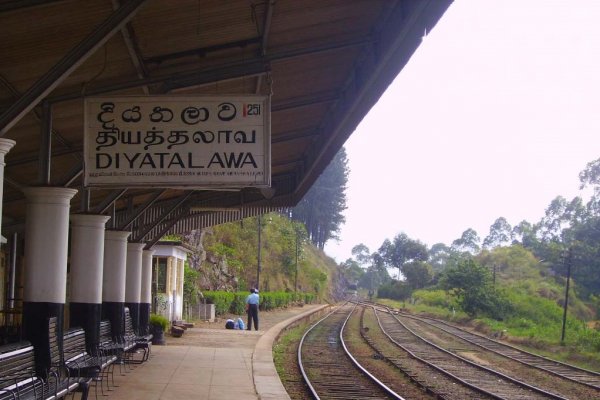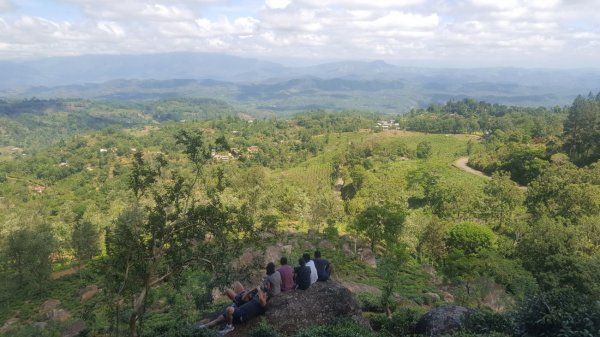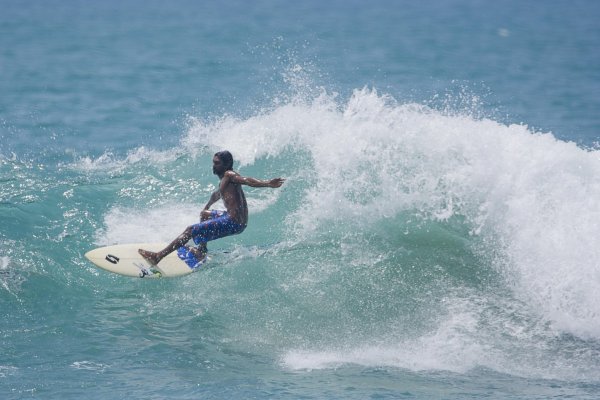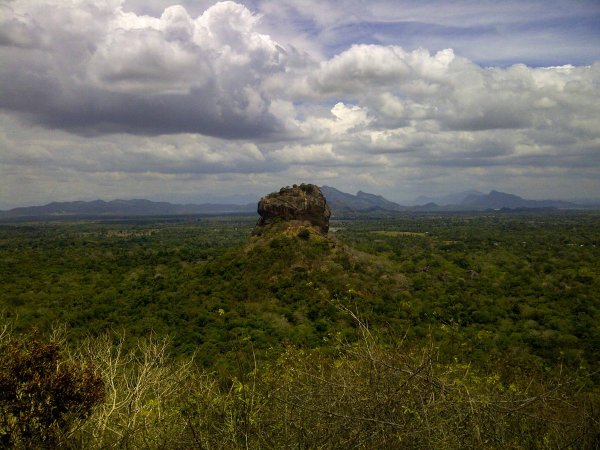
Note: The author, a self-admitted worse than irregular Roar Contributor, was so excited by the news of our recently announced foray into Bangladesh with www.roar.com.bd that she activated herself to sending us this piece. The photos below are a compilation of work taken over the two and four years respectively, that she and British colleague/amateur-photographer-in-arms, John Stanlake, spent in Bangladesh (particularly in the port city of Chittagong) as part of the game-changing Asian and Middle East (including Sri Lanka and Bangladesh) access to higher-education project ‒ Asian University for Women.
For those who may not be able to read Roar’s Bengali counterpart, our hope is to present a gateway (albeit, limited) view into a country of great contrasts. Birthed in a violent geopolitical struggle within the subcontinent as recently as 1971, the country is home to 160 million inspiringly proud Bengalis who unite fervently under the vision of the Rabindranath Tagore penned anthem Amar Sonar Bangla ‒ My Golden Bengal.
It is a country that is vibrant, warm, spirited. Both welcoming and challenging, extremely crowded yet simultaneously untouched and even unexplored; incredibly wealthy (in culture, and, for a handful, in terms of capital) and incredibly poor (31.5% – the highest percentage for South Asia – live on under USD $2 a day).
Bangladesh is big, bustling, cities and ports, AND small, scattered, subsistence villages, AND tremendous natural terrain (see the Sundarbans, home of the Bengal Tiger). It is also ingenuity and enterprise ‒ BRAC and Grameen Bank are the most renowned of numerous examples ‒ and it is hard-working in the rawest sense (goods, such as multiple refrigerators and sewing machines, can be seen being pushed or cycle-pulled over miles, at times while barefoot, by as little as 1-2 people on wheeled carts ‒ and the value for this labour is far from commensurate).
Sonar Bangla is Alice in Wonderland’s, ‘I believe in as many as six impossible things before breakfast’ multiplied by a hundred. It is a country to be viewed with the eyes, mind, and heart wide open, and with an approach of awareness and adventure as you wander and learn of and learn from all its complexities.
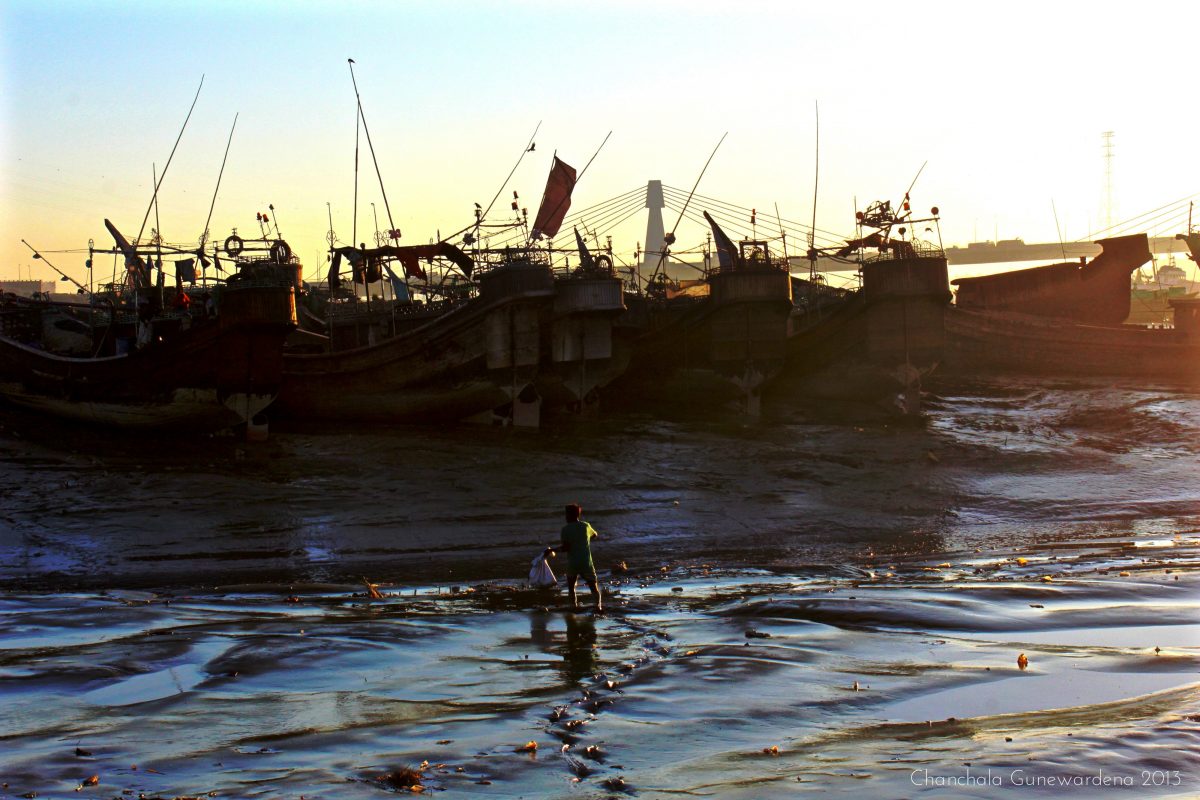
Grounded Ships, Sinking Man: A man gathers recyclable trash for selling in the shadow of the towering boats at the Sadarghat port area of Chittagong. The Shah Amanat Bridge, opened in 2010 as the first cable-supported bridge in the country, can be seen on the horizon.
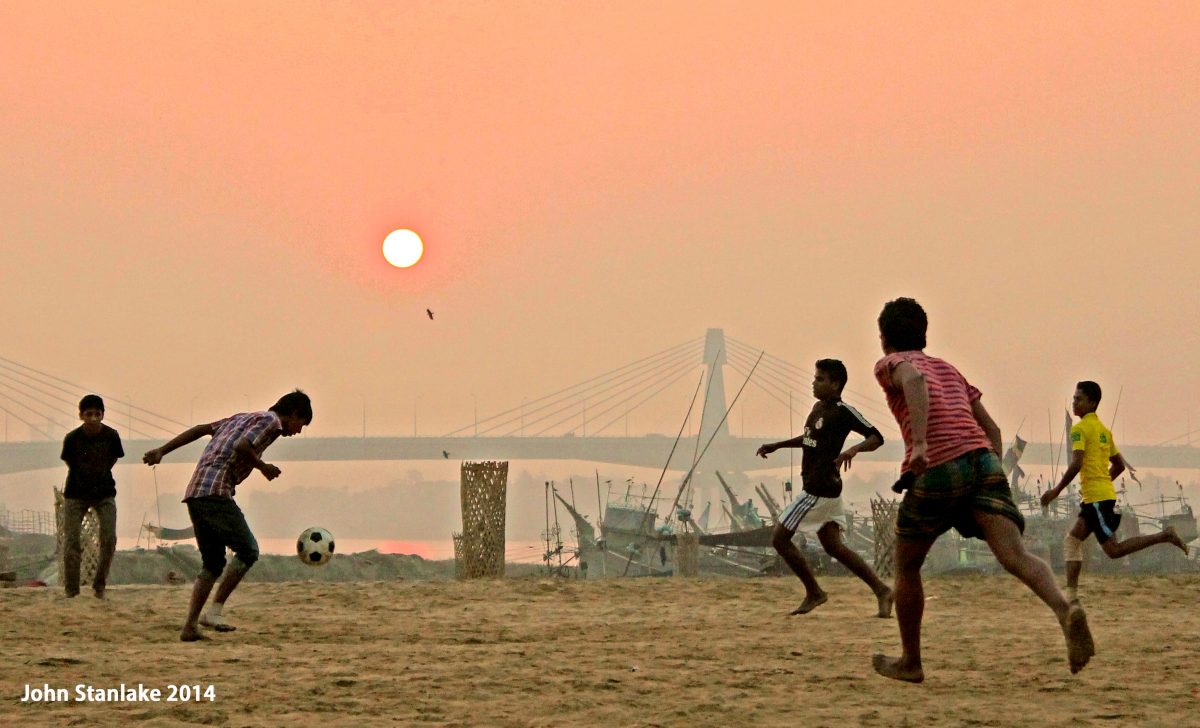
Sunrise Sports: A common sight across Bangladesh, of people taking advantage of the cooler air at dawn to engage in early morning sport and exercise. While cricket holds ground, football can be seen gaining popularity on beaches and empty plots of land across the country.
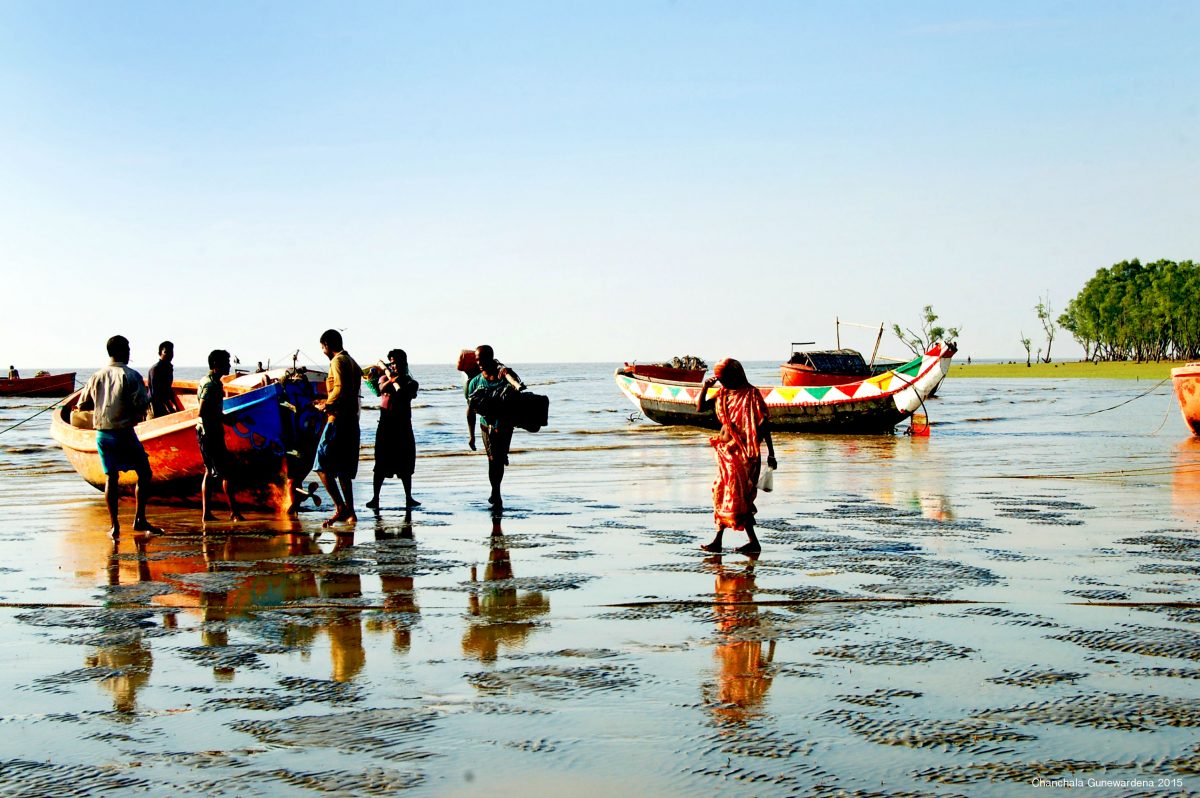
The Colours Of Mangrove Beach: With mangroves growing right by it, this beach is silt-like and reflective. Many smaller, vibrant fishing boats can be found coming to land with their daily catch in hand.

Like Father Like Son: Fishing is a major industry in Bangladesh, and it is particularly prevalent along the shoreline and off the coast of Cox’s Bazar, pictured here ‒ which at 125 km in continuous length is the longest uninterrupted sea beach in the world. In this photo, a young boy follows his father out to work.
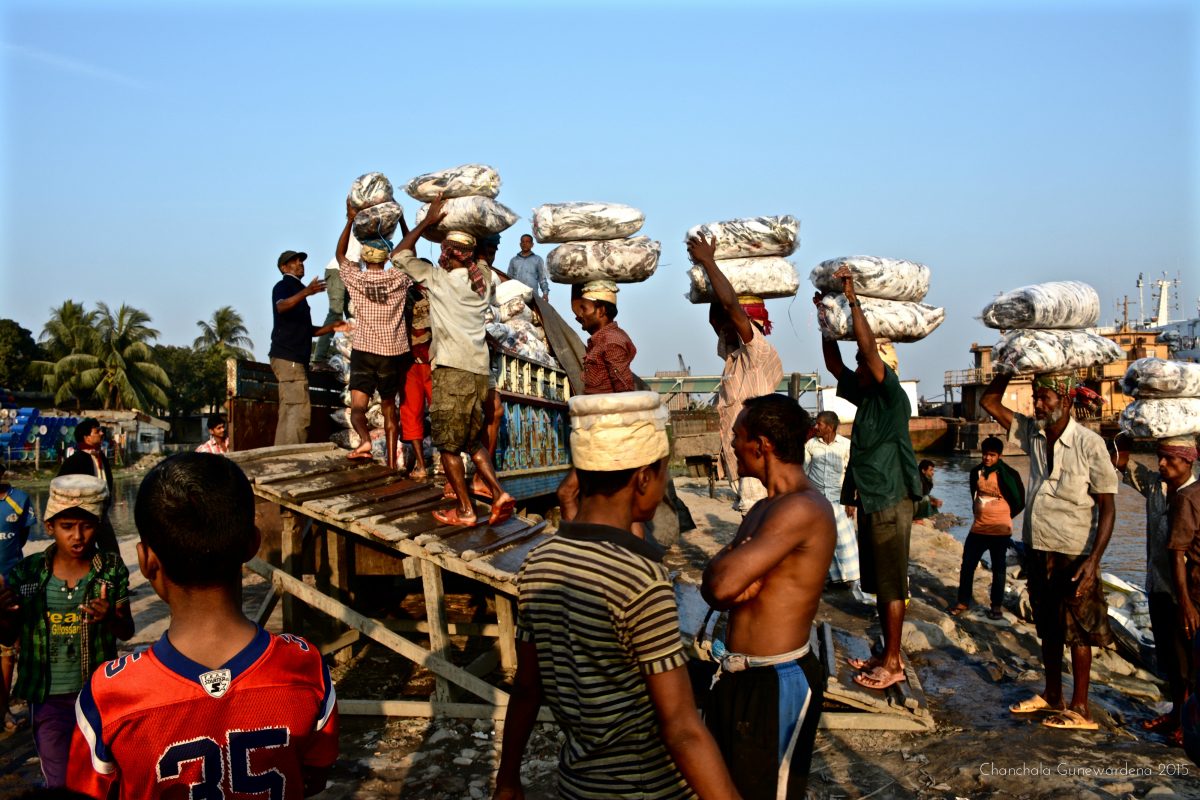
Loading Up The Catch: Fish is transferred to market-bound trucks and carts by being carried on the heads of men and young boys who work on the docks.
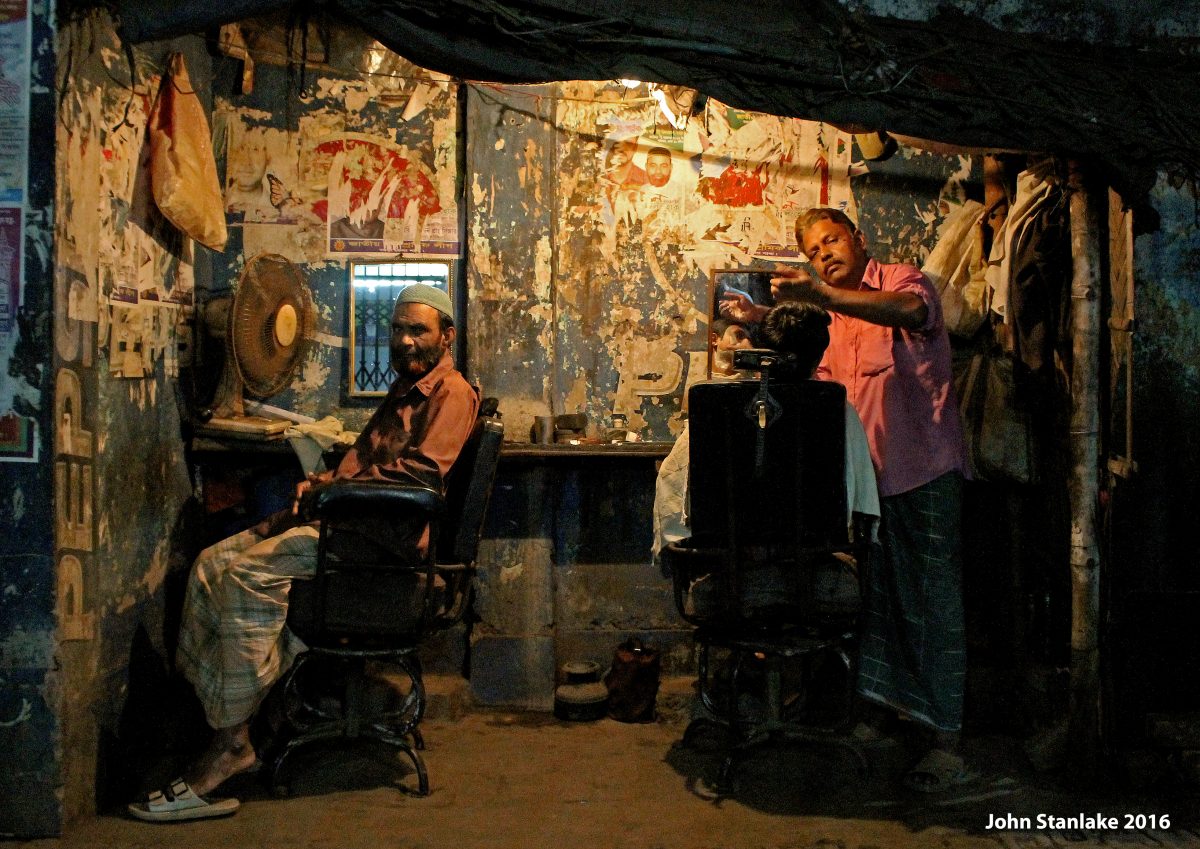
Sidestreet Salon: Located on a side street in the centre of Bogra (northern Bangladesh), this salon represents a glimpse into the vast amount of micro-businesses that people take on when they move from more rural settings into the larger towns and cities.
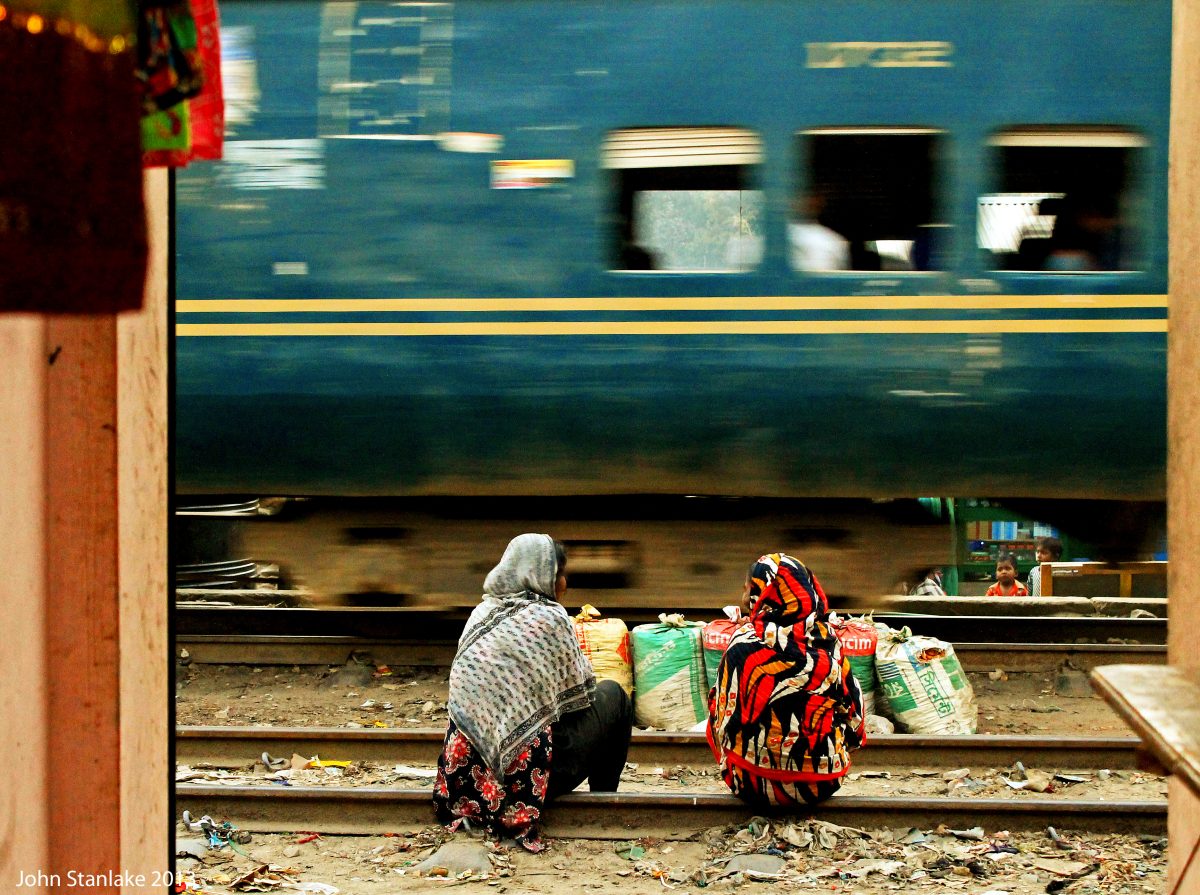
Life By The Tracks: The railway lines of Bangladesh provide inter and intra city travel throughout the country. In the urban areas the tracks are often bordered by communities whose housing is positioned close to the lines.
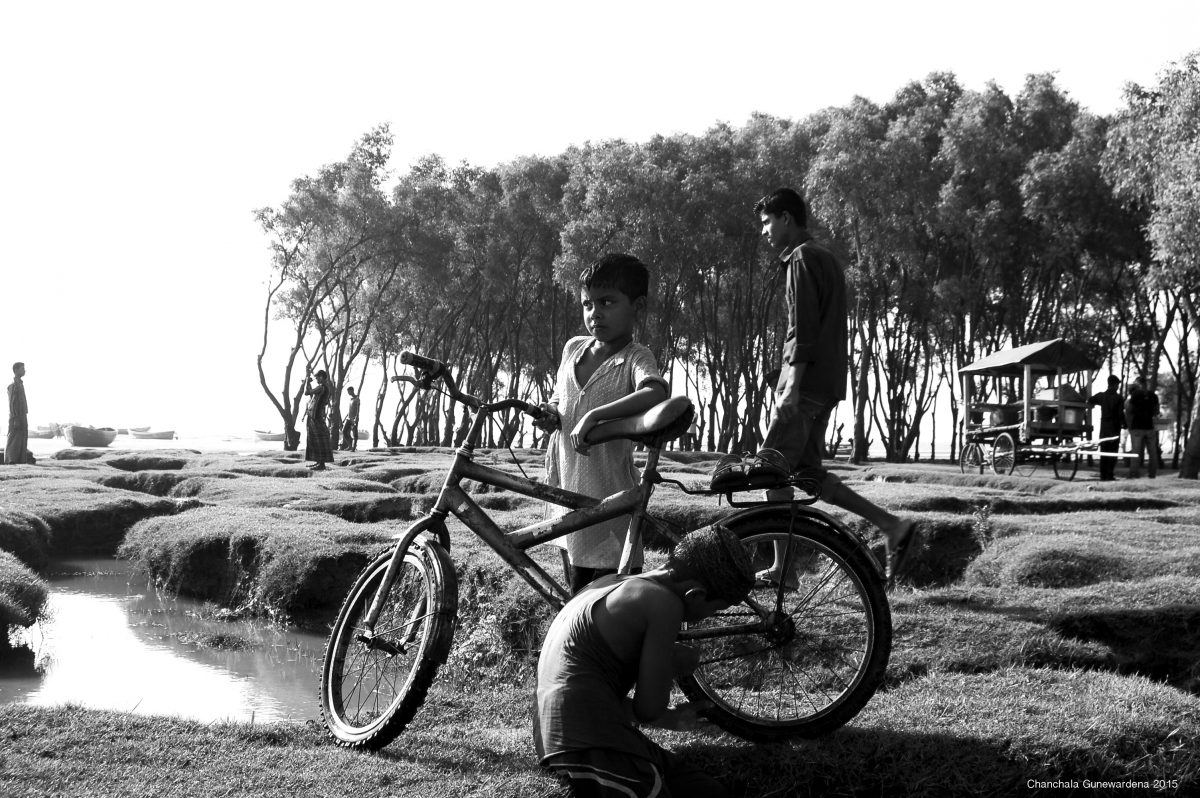
Cycle King: These young boys are a focal point in a milieu of people, alone and in groups, that gather for an evening out within the changing terrain of Kattali, Chittagong’s mangrove beach.
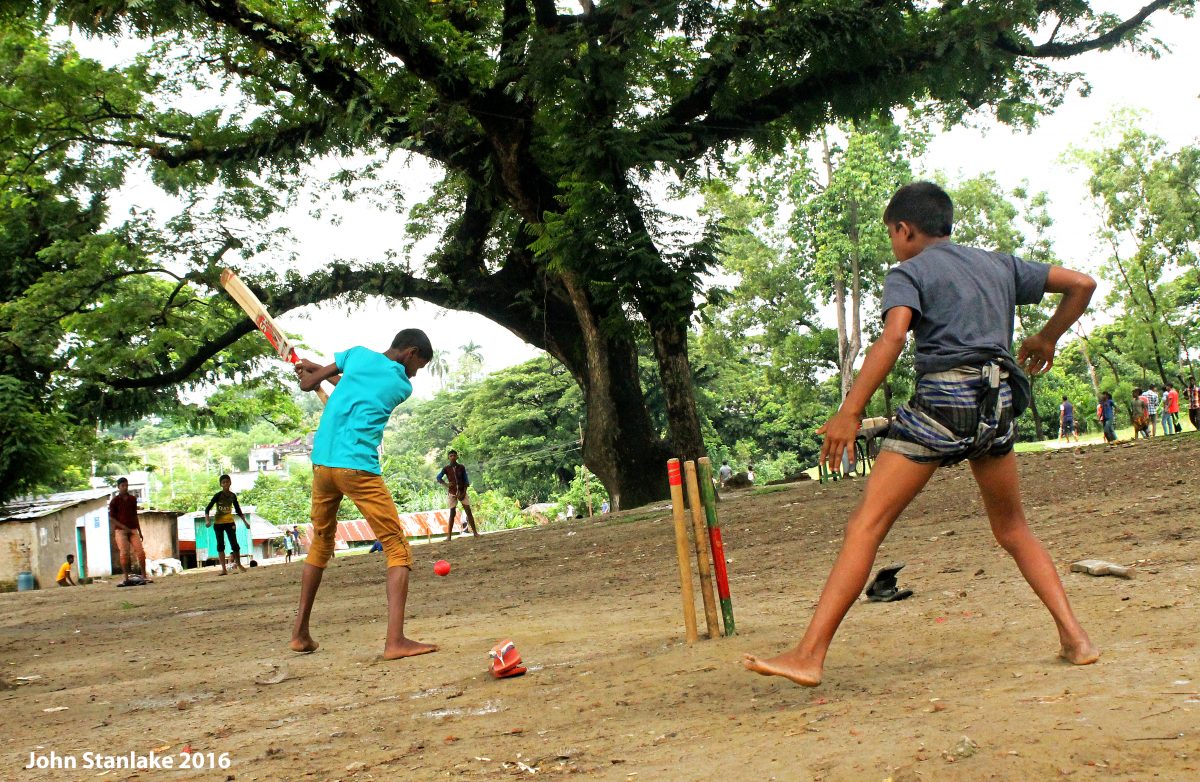
Rise Of The Tigers: In recent years, the national men’s cricket team, known proudly as ‘The Tigers,’ has become a real force to be reckoned with on the international cricket stage, celebrating victories over the likes of Australia, South Africa, England, India, and Pakistan. Young players are encouraged by their heroes, and with the parallel success of the Bangladesh women’s team, there is hope to see more young women taking to the bat and ball in these parks as well.
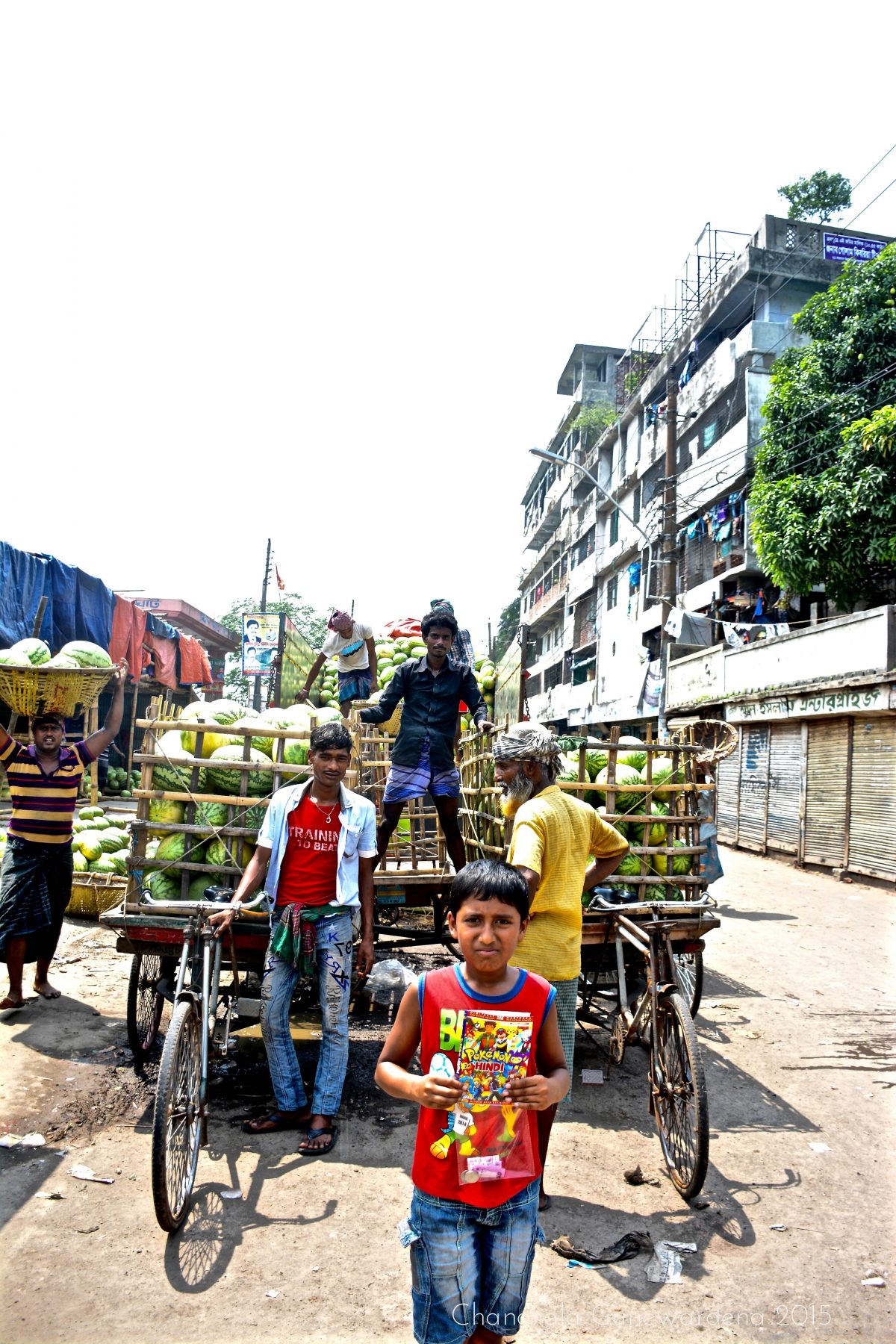
Of Melons And Men: Fruits and veggies are unloaded at ports, alongside the more bountiful hauls of fish. Here, many large and heavy melons are being loaded on to cycle carts to be taken to market.
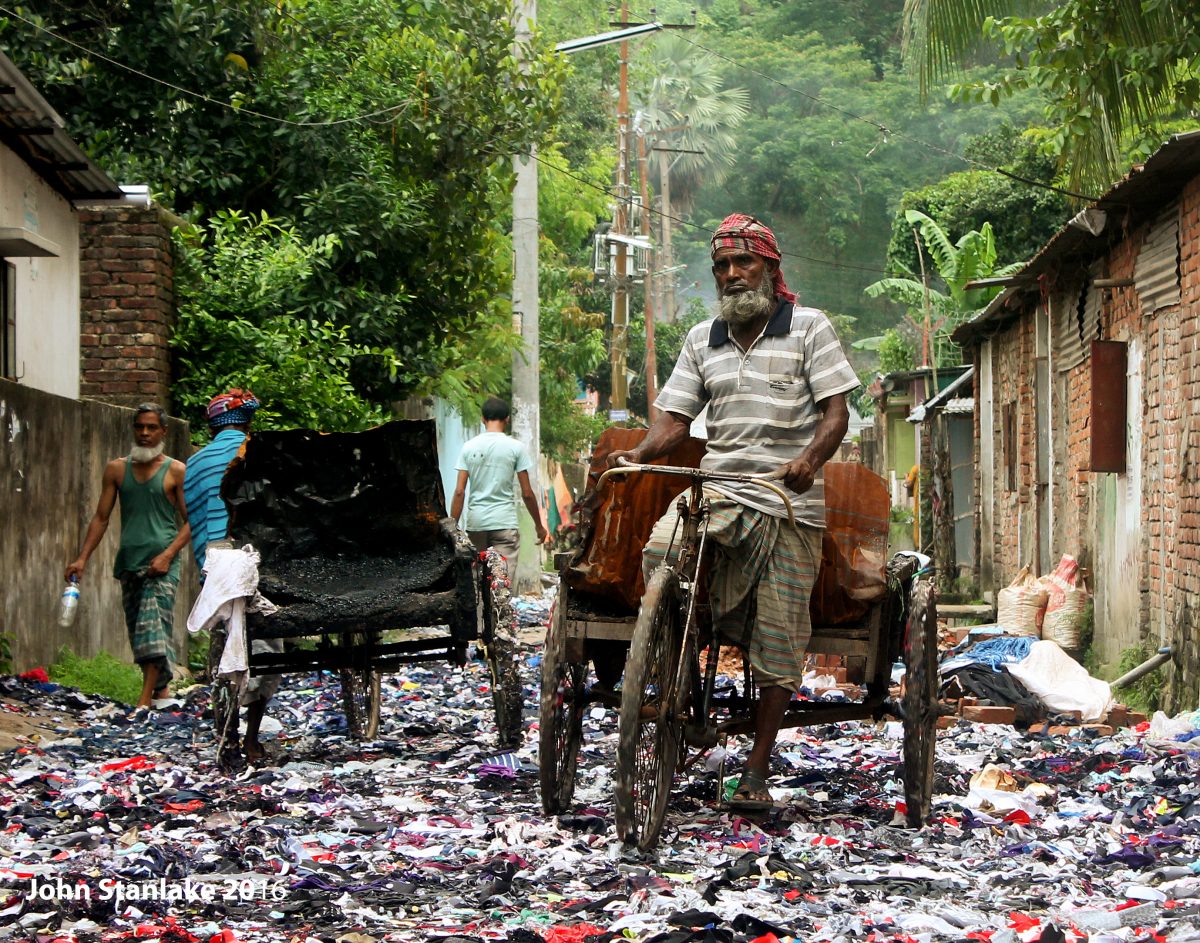
What Gets Leftover: A rickshaw driver passes over scrap material spilling onto the roadside from an apparel factory disposal point in Chittagong. With the apparel sector providing for the employment of millions and significant export revenue, Bangladesh’s complicated relationship with the industry is well-recorded.
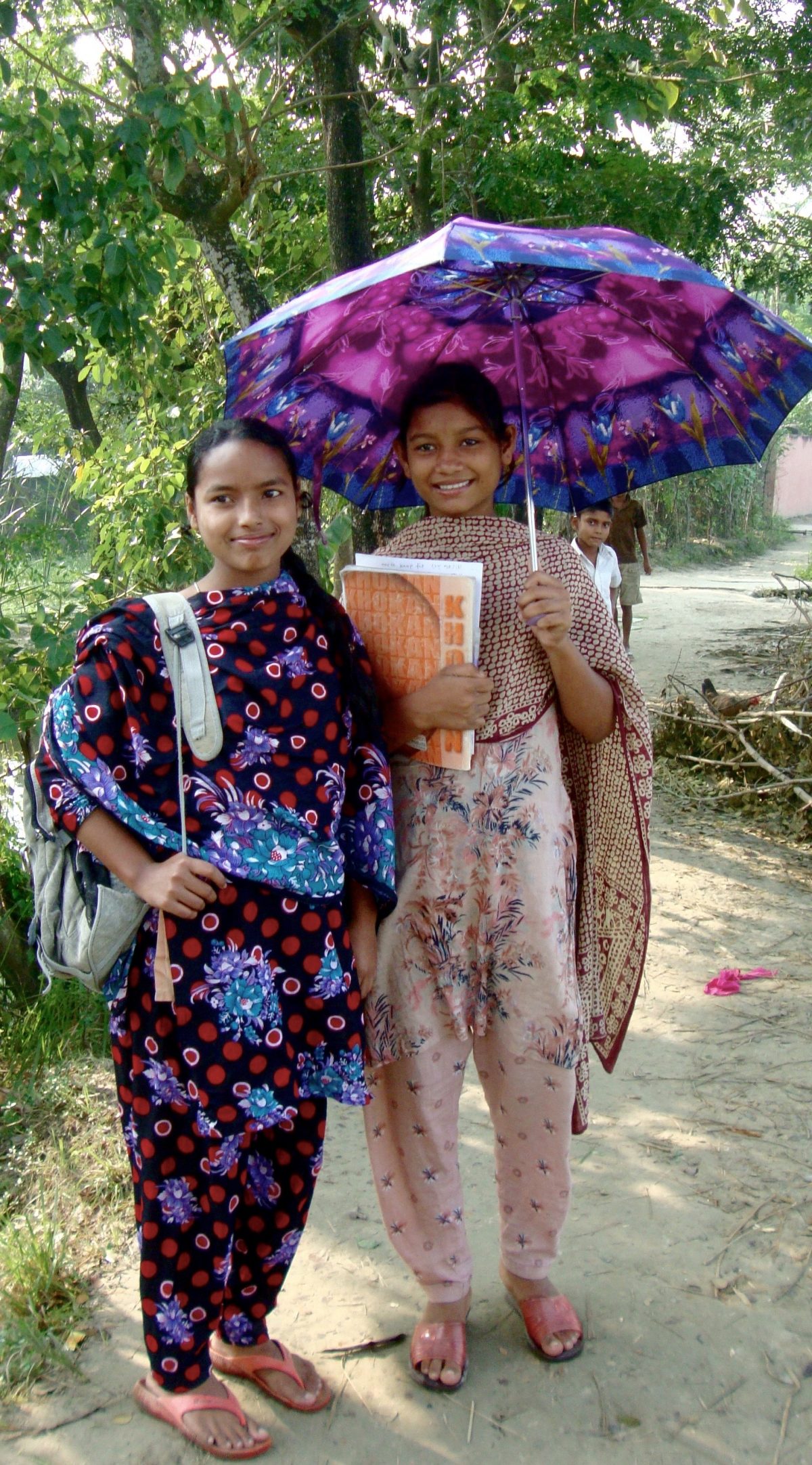
Class On Saturday (the upside): Thanks to AUW, John and Chanchala are fortunate to work with young women from over 15 countries, including Sri Lanka and Bangladesh, who really prove how access to higher education can make all the difference in opening up perspectives and opportunity, and realising one’s strengths and potential. As part of this work, we are also keenly aware that it is women who are also most vulnerable to losing such access ‒ whether it be for financial, social, or structural reasons. It is heartening to meet young women heading off to classes with enthusiasm even on this beautiful Saturday. (Weekends in Bangladesh are Fridays and Saturdays).
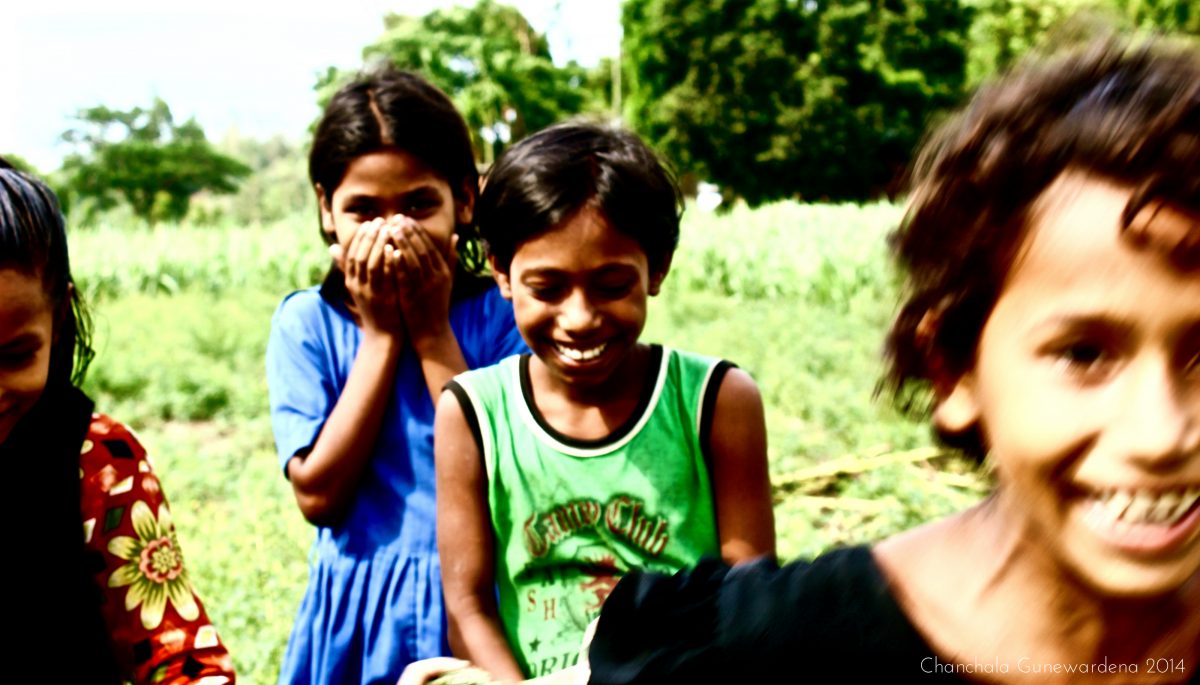
Caught Smiling: As a woman, Chanchala is more likely than John to receive permission from women to photograph them. She met these young girls in the Chittagong countryside where they made a very serious endeavour to strike a solemn pose. Using her poor Bangla skills to break the ice, Chanchala managed to capture this brief shot of them in a relaxed and humourous moment.
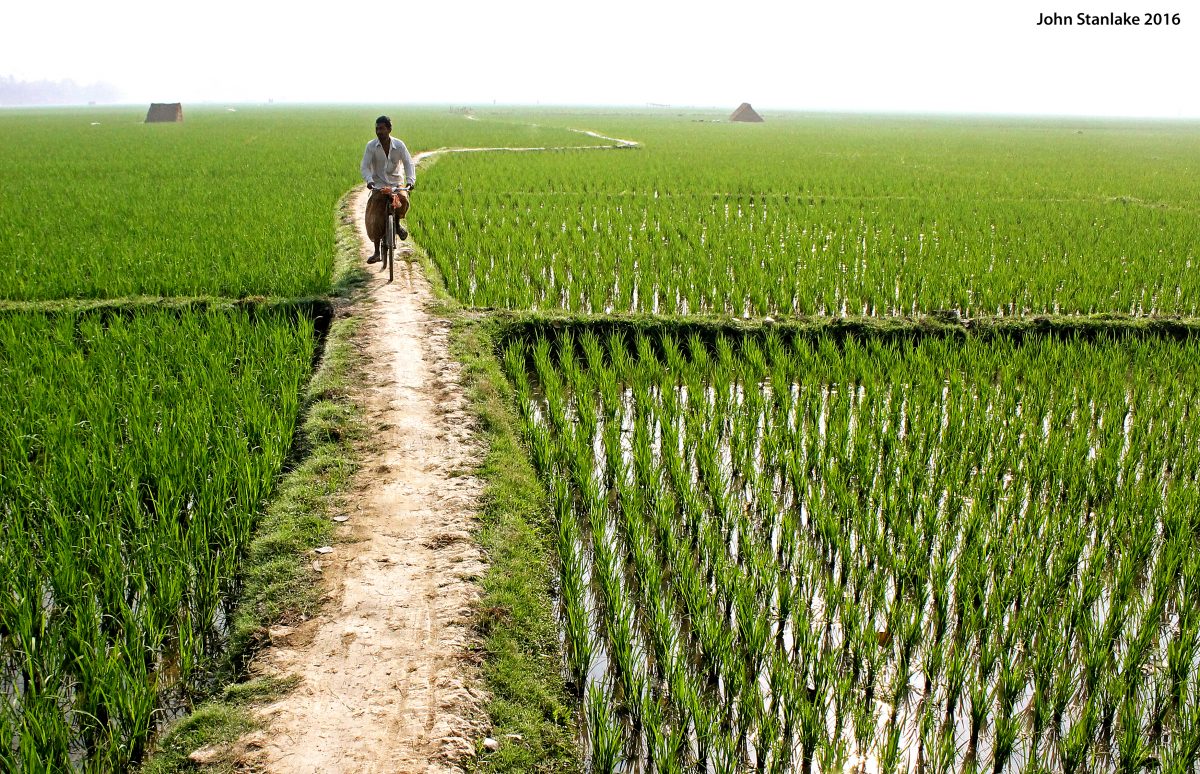
Pedalling Through The Paddies: Rice production is the backbone of agriculture in Bangladesh, and an aerial view of the country shows exactly why. This photo from Dinajpur depicts a common sight in Bangladesh as rice paddies account for 75% of agricultural land use.
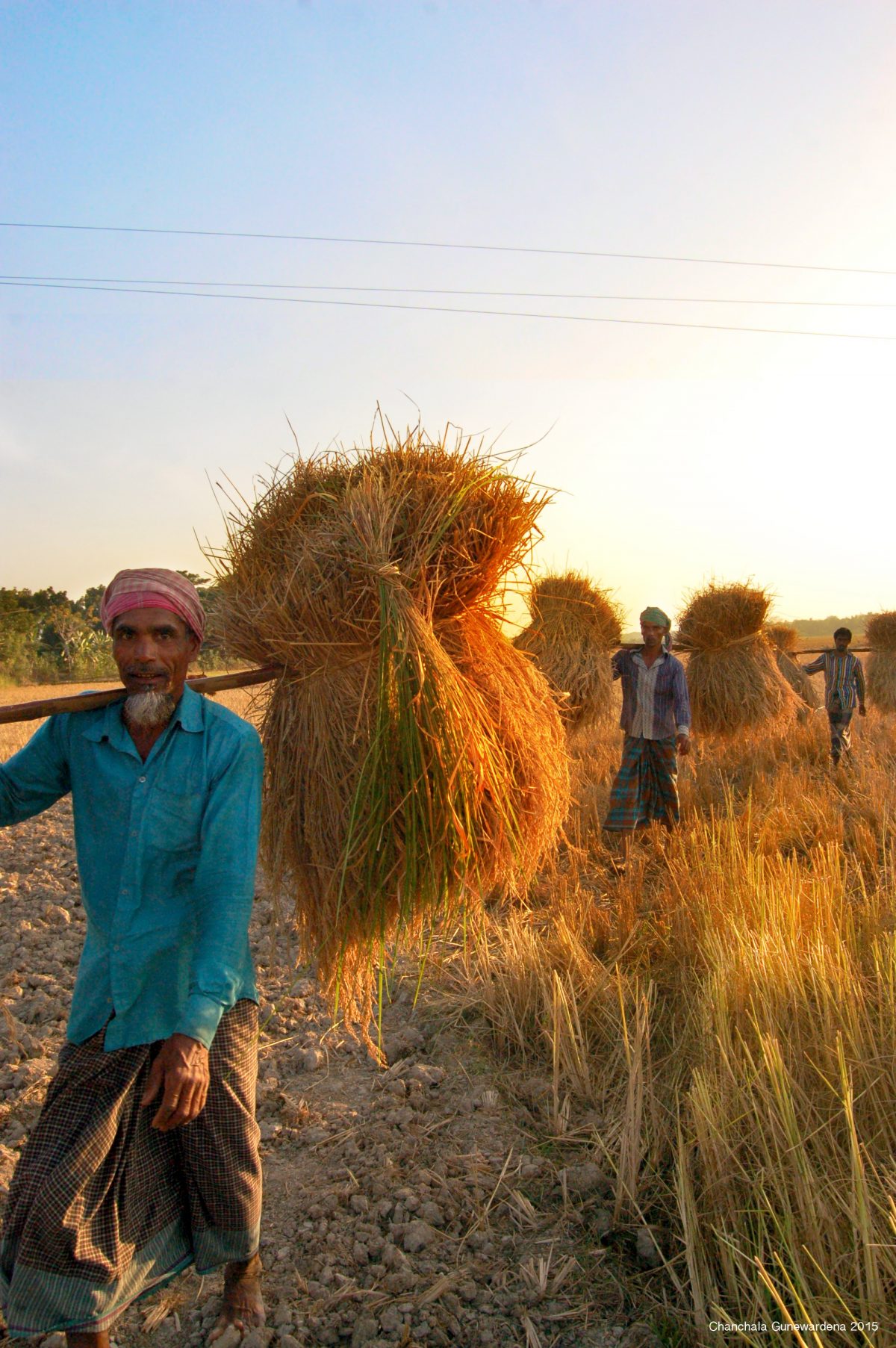
The Harvest Of Sonar Bangla: Golden Bengal comes to life as a rich harvest is brought in at sunset in Roazan, Chittagong. Around 48%* of Bangladeshis are employed in the agriculture sector. (*World Bank & CIA Factbook Data 2016)

A Man And His Boat: The waterways of Bangladesh provide crucial trading and transport links throughout the country, and they are filled each day with boats of varying shapes and sizes. Here in Jessore district, John encountered this boatman enjoying a quiet moment on the water in the late afternoon.
Chanchala and John are aware that theirs is an outsider’s lens upon a country and their work should be viewed in that light. They also know Bangladesh to have some incredible home-grown talent of much greater repute and would encourage you to explore further starting with the following:
1. Saiful Huq Omi – National Geographic awarded, international photographer whose six years of work on the stateless Rohingya refugees of Bangladesh and Myanmar is astoundingly devastating. He also has incredible work from the ship-breaking yards of Chittagong.
2. Taslima Akther – she is the documentary photographer behind the haunting photo of a couple found buried in an embrace in the rubble of 2013’s Rana Plaza garment building collapse.
3. Shehab Uddin – former photojournalist lived with families at various levels of poverty and worked with them to bring to life their daily experience in a powerful and informed collaboration.
4. Shamim Shorif Susom – Bangladeshi aviator captures breathtaking views of the Bangladeshi landscape from above.
5. Tania Rashid – Tania is a Bangladeshi-American former correspondent with Vice News and now with Nat Geo. Her inside look into Bangladesh’s largest brothel-village Daulatdia, her work on violence against women in the remote villages of Bangladesh, her election violence reporting and more provides access and insights you wouldn’t believe.
You can find more of Chanchala and John’s photos from Bangladesh and other travels on Instagram: grlwhocntbestill and jestanlake.
You could also check out the Instagram of AUW Photography Club (of which John is faculty advisor) ‒ they hold an annual photography carnival that is open to international entries.
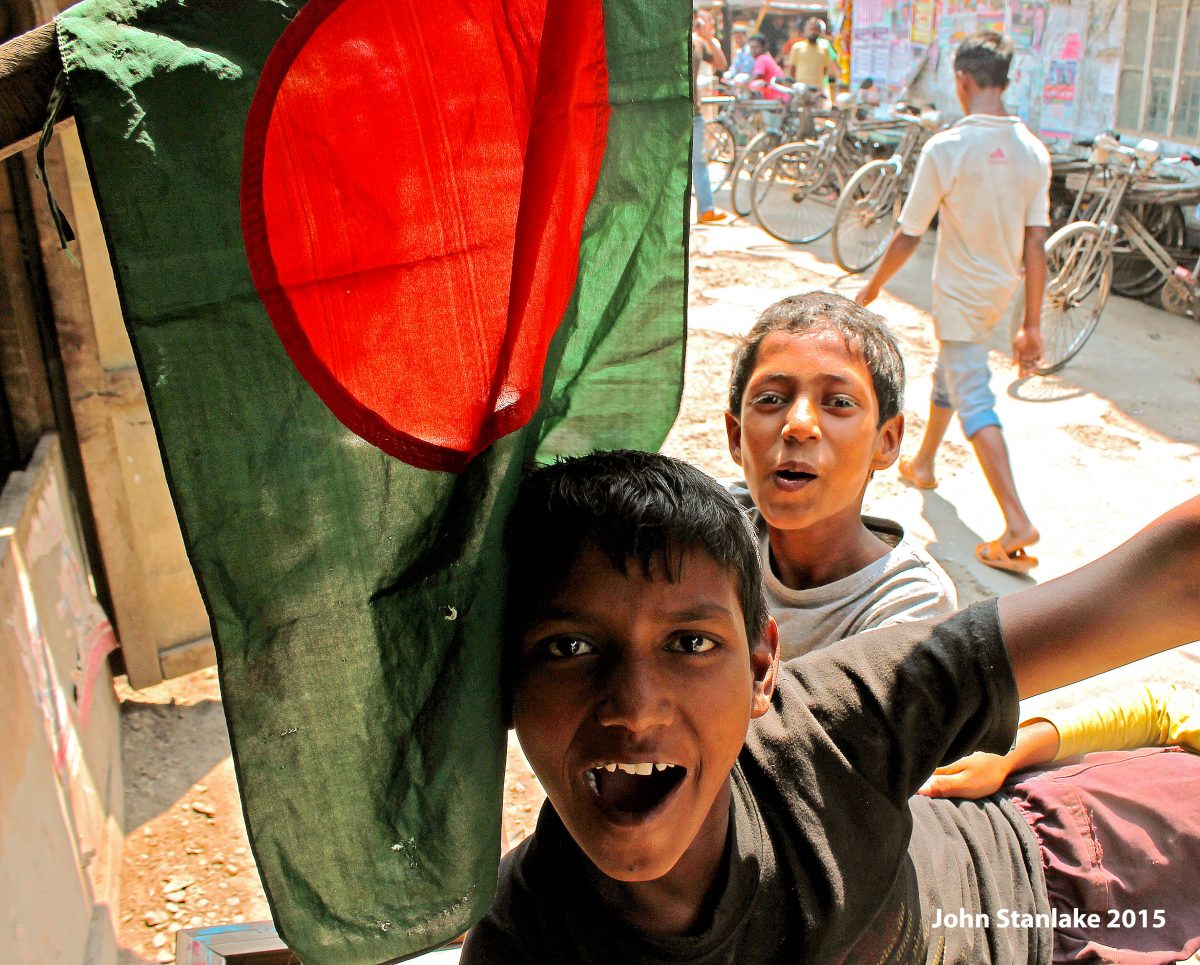
Joy Bangla!
